Resources
About Us
China Neurogenomics Market Size, Share, Forecast, & Trends Analysis by Offering (NGS [Kits {Library Prep, QC, DNA Extraction}, Systems], PCR, Microarrays [Protein, DNA, RNA, Tissue], Software), Application (Research, Clinical), End User - Forecast to 2031
Report ID: MRHC - 1041320 Pages: 140 Oct-2024 Formats*: PDF Category: Healthcare Delivery: 2 to 4 Hours Download Free Sample ReportThe growth of the China neurogenomics market is driven by the declining costs of sequencing, the increasing prevalence of neurological disorders, the growing utilization of advanced sequencing technologies in disease diagnostics & precision medicine, increasing pharmaceutical R&D expenditures, improvements in regulatory & reimbursement scenarios for gene sequencing, rising healthcare expenditures, increasing funding for research activities, the growing need for the early detection & prevention of neurological diseases, technological advancements in neurogenomics products, and government initiatives promoting the use of sequencing in clinical & research applications. However, the high prices of neurogenomics products, the low chances of identifying positive actionable mutations for precision medicine, and ethical & legal issues related to sequencing-based diagnosis restrain the growth of this market.
Furthermore, the increasing adoption of targeted therapies, emerging economies, and rising awareness regarding neurological disorders are expected to create market growth opportunities. However, the dynamic regulatory landscape, the limited expertise & sequencing capabilities of small & medium-sized laboratories, the shortage of sequencing professionals in the country, and the high capital investments required for sequencing setups are major challenges in the China neurogenomics market.
Precision medicine is an emerging approach to patient care. Physicians choose a treatment method based on the patient’s genetic makeup, also considering genetic changes resulting from a disease and lifestyle habits. It is an emerging disease treatment & prevention approach that considers variability in genes, environments, and lifestyles among individuals. Precision medicine can reduce the need for guesswork (trial and error in medication depending on how the medication affects the patient’s symptoms), help physicians overcome challenges related to variable diagnostic ability, and aid the development of treatment strategies based on generalized demographics. Moreover, precision medicine provides a more holistic view of an individual’s health. In clinical neurogenomics workflows, precision medicine facilitates more predictive and preventive care through targeted therapies. Major advantages of precision medicine for neurological conditions include reductions in trial & error prescriptions, avoidance of adverse drug reactions, increased patient adherence to treatment due to fewer side effects, a decrease in the prescription of unnecessary drugs to non-responder patients, and optimization of drug development costs.

Click here to: Get Free Sample Pages of this Report
China accounts for approximately 17% of the global disease burden related to neurological, mental, and substance use disorders. The country is rapidly undergoing a societal change, facing challenges in reducing the disease burden of psychiatric disorders. The increasing cases of neurological disorders have increased the burden on the country’s healthcare system, further boosting the demand for more advanced diagnostic solutions. For instance, China faces the greatest burden of stroke globally. According to results from the Global Burden of Disease Study 2019, there were 3.94 million new stroke cases, 28.76 million prevalent stroke cases, and 2.19 million deaths due to stroke in China in 2019 (Source: Data Management and Sharing System of the China National Clinical Research Center for Neurological Diseases).
Furthermore, cases of Alzheimer’s disease are adding to the growing burden of neurological diseases in the country. According to a recent national cross-sectional study, China has 15.07 million individuals aged 60 years and over with dementia, which includes 9.83 million individuals with Alzheimer’s disease, 3.92 million individuals with vascular dementia, and nearly 1.32 million individuals with other forms of dementia. Thus, the increasing burden of neurological disorders is expected to boost the demand for advanced neurological solutions in the country.
Targeted therapies are being increasingly adopted in neurogenomics studies due to several factors, including their ability to target specific cells, their efficacy and safety, and the increasing number of targeted therapies being approved by the FDA. Also, in neurogenomics, targeted therapies can restrict disease progression in the early phases. NGS has a major application in cancer diagnosis and targeted therapies based on biomarkers. The use of targeted therapies is expected to boost the demand for neurogenomics solutions, generating market growth opportunities in the long run.
By offering, the China neurogenomics market is segmented into NGS, PCR, microarray, and software & services. In 2024, the Next-generation Sequencing (NGS) segment is expected to account for the largest share of 64.1% of the China neurogenomics market. The segment’s substantial market share is primarily attributed to the recurring demand for consumables, increasing sequencing-based clinical & research applications of neurogenomics, and the growing preference for sequencing-based diagnostics.
Moreover, the NGS segment is also expected to record the highest CAGR during the forecast period due to the increasing demand for NGS consumables, the higher accuracy of NGS compared to other sequencing technologies, and the increasing number of genomics projects based on sequencing.
By application, the China neurogenomics market is segmented into research applications and clinical applications. The research applications segment is further segmented into functional studies, target identification, variant discovery, and transcription factor binding analysis. In 2024, the research applications segment is expected to account for the larger share of 61.4% of the China neurogenomics market. The segment’s large share is attributed to the extensive use of NGS, PCR, and microarray solutions in research to identify specific genes and their sequences to gain a better understanding of the mechanisms underlying complex neurological diseases such as Parkinson's disease, Alzheimer's disease, Amyotrophic Lateral Sclerosis (ALS), and psychiatric disorders.
Moreover, the research applications segment is expected to record the higher CAGR during the forecast period due to the rising demand for advanced research solutions among laboratories to develop treatments for neurological conditions, the increasing demand for personalized medicine, and research studies to identify specific gene mutations in complex neurological diseases such as Alzheimer’s disease and Parkinson’s disease.
By end user, the China neurogenomics market is segmented into pharmaceutical & biotechnology companies, hospitals & diagnostic laboratories, and academic & research institutes. In 2024, the pharmaceutical & biotechnology companies segment is expected to account for the largest share of 44.5% of the China neurogenomics market. The segment’s large share is primarily attributed to pharmaceutical & biotechnology companies’ high adoption of advanced technologies for research, the high availability of capital for research, increasing research for drug discovery, and the widening applications of NGS.
However, the academic & research institutes segment is expected to record the highest CAGR during the forecast period due to the rising number of research centers in China, increasing private & government funding for neurogenomics research, and the increasing utilization of advanced solutions by academic & research institutes.
The report offers a competitive analysis based on an extensive assessment of the leading players’ product portfolios, geographic presence, and key growth strategies adopted in the last three to four years. Some of the key players operating in the China neurogenomics market are Illumina, Inc. (U.S.), Thermo Fisher Scientific Inc. (U.S.), F. Hoffmann-La Roche Ltd (Switzerland), QIAGEN N.V. (Netherlands), Agilent Technologies, Inc. (U.S.), Revvity, Inc. (U.S.), Pacific Biosciences of California Inc. (U.S.), Danaher Corporation (U.S.), Oxford Nanopore Technologies Plc. (U.K.), and MGI Tech Co., Ltd. (China).
|
Particulars |
Details |
|
Number of Pages |
140 |
|
Format |
|
|
Forecast Period |
2024–2031 |
|
Base Year |
2023 |
|
CAGR (Value) |
19.4% |
|
Market Size (Value) |
$562.1 Million by 2031 |
|
Segments Covered |
By Offering
By Application
By End User
|
|
Key Companies Profiled |
Illumina, Inc. (U.S.), Thermo Fisher Scientific Inc. (U.S.), F. Hoffmann-La Roche Ltd (Switzerland), QIAGEN N.V. (Netherlands), Agilent Technologies, Inc. (U.S.), Revvity, Inc. (U.S.), Pacific Biosciences of California Inc. (U.S.), Danaher Corporation (U.S.), Oxford Nanopore Technologies Plc. (U.K.), and MGI Tech Co., Ltd. (China) |
The China neurogenomics market study focuses on market assessment and opportunity analysis based on the sales of neurogenomics products across various market segments in China. The report also includes a competitive analysis based on the leading market players’ product portfolios and key growth strategies adopted in the last 3–4 years.
The China neurogenomics market is projected to reach $562.1 million by 2031, at a CAGR of 19.4% during the forecast period.
In 2024, the Next-generation Sequencing (NGS) segment is expected to hold the major share of the China neurogenomics market.
The research applications segment is expected to witness the fastest growth during the forecast period 2024–2031.
The growth of the China neurogenomics market is driven by the declining costs of sequencing, the increasing prevalence of neurological disorders, the growing utilization of advanced sequencing technologies in disease diagnostics & precision medicine, increasing pharmaceutical R&D expenditures, improvements in regulatory & reimbursement scenarios for gene sequencing, rising healthcare expenditures, increasing funding for research activities, the growing need for the early detection & prevention of neurological diseases, technological advancements in neurogenomics products, and government initiatives promoting the use of sequencing in clinical & research applications.
Furthermore, the increasing adoption of targeted therapies, emerging economies, and rising awareness regarding neurological disorders are expected to create growth opportunities for the vendors in this market.
The key players operating in the China neurogenomics market are Illumina, Inc. (U.S.), Thermo Fisher Scientific Inc. (U.S.), F. Hoffmann-La Roche Ltd (Switzerland), QIAGEN N.V. (Netherlands), Agilent Technologies, Inc. (U.S.), Revvity, Inc. (U.S.), Pacific Biosciences of California Inc. (U.S.), Danaher Corporation (U.S.), Oxford Nanopore Technologies Plc. (U.K.), and MGI Tech Co., Ltd. (China).
1. Introduction
1.1 Market Definition
1.2 Market Ecosystem
1.3 Currency & Limitations
1.4 Key Stakeholders
2. Research Methodology
2.1 Research Approach
2.2 Data Collection & Validation Process
2.2.1 Secondary Research
2.2.2 Primary Research/Interviews with Key Opinion Leaders from the Industry
2.3 Market Sizing & Forecasting
2.3.1 Market Size Estimation Approach
2.3.2 Market Share Analysis of Key Players
2.3.3 Growth Forecast Approach
2.4 Assumptions for the Study
3. Executive Summary
4. Market Insights
4.1 Overview
4.2 Factors Affecting Market Growth
4.2.1 Impact Analysis of Market Dynamics
4.2.2 Factor Analysis
4.3 Pricing Analysis
4.4 Regulatory Analysis
4.5 Porter’s Five Forces Analysis
5. China Neurogenomics Market Assessment—by Offering
5.1 Overview
5.2 Next-generation Sequencing (NGS)
5.2.1 Systems
5.2.2 Kits & Reagents
5.2.2.1 DNA Extraction & Amplification Kits & Reagents
5.2.2.2 Library Preparation & Target Enrichment Kits & Reagents
5.2.2.3 Quality Control Kits & Reagents
5.2.2.4 Other NGS Kits & Reagents
5.3 Polymerase Chain Reaction (PCR)
5.3.1 Systems
5.3.2 Kits & Reagents
5.4 Microarray
5.4.1 Readers & Scanners
5.4.2 Kits & Reagents
5.4.2.1 DNA & RNA Microarray Kits & Reagents
5.4.2.2 Protein Microarray Kits & Reagents
5.4.2.3 Tissue Microarray Kits & Reagents
5.5 Software & Services
6. China Neurogenomics Market Assessment—by Application
6.1 Overview
6.2 Research Applications
6.2.1 Target Identification
6.2.2 Transcription Factor Binding Analysis
6.2.3 Functional Studies
6.2.4 Variant Discovery
6.3 Clinical Applications
7. China Neurogenomics Market Assessment—by End User
7.1 Overview
7.2 Pharmaceutical & Biotechnology Companies
7.3 Hospitals & Diagnostic Laboratories
7.4 Academic & Research Institutes
8. Competition Analysis
8.1 Overview
8.2 Key Growth Strategies
8.3 Competitive Benchmarking
8.4 Competitive Dashboard
8.4.1 Industry Leaders
8.4.2 Market Differentiators
8.4.3 Vanguards
8.4.4 Emerging Companies
8.5 Market Share Analysis (2023)
8.5.1 Illumina, Inc. (U.S.)
8.5.2 MGI Tech Co., Ltd. (China)
8.5.3 Thermo Fisher Scientific Inc. (U.S.)
8.5.4 F. Hoffmann-La Roche Ltd. (Switzerland)
8.5.5 Revvity, Inc. (U.S.)
9 . Company Profiles (Company Overview, Financial Overview, Product Portfolios, Strategic Developments, and SWOT Analysis)
9.1 Illumina, Inc. (U.S.)
9.2 Thermo Fisher Scientific Inc.
9.3 F. Hoffmann-La Roche Ltd
9.4 MGI Tech Co., Ltd.
9.5 Agilent Technologies, Inc.
9.6 Revvity, Inc.
9.7 Qiagen N.V.
9.8 Pacific Biosciences of California Inc.
9.9 Danaher Corporation
9.10 Oxford Nanopore Technologies Plc.
(Note: SWOT Analysis will be provided for the top 5 market players.)
10. Related Reports
List of Tables
Table 1 China: List of Personalized Medicine (PM)-related Policy Measures
Table 2 China: Proportion of Brain Tumor Histology and Malignancy Status, by Age Subgroup, 2019-2020
Table 3 China: Data on the Disease Burden of AD and Other Dementias in Each Province, Autonomous Region, and Municipality Directly Under the Central Government, 2021 (Per 100,000 Population)
Table 4 China: Major Genome Sequencing Projects
Table 5 China: Brain Tumor Centers
Table 6 Sequencing Kits & Reagents/Consumables: Pricing
Table 7 Sequencing Instruments: Product Description & Pricing
Table 8 PCR Consumables & Instruments: Pricing
Table 9 Regulatory Authorities Governing In Vitro Diagnostics, by Country/Region
Table 10 China Neurogenomics Market, by Offering, 2022–2031 (USD Million)
Table 11 China Neurogenomics Market for Next-generation Sequencing (NGS), by Product, 2022–2031 (USD Million)
Table 12 China Next-generation Sequencing (NGS) Kits & Reagents Market, by Type, 2022–2031 (USD Million)
Table 13 China Polymerase Chain Reaction (PCR) Market, by Type, 2022–2031 (USD Million)
Table 14 China Microarray Kits & Reagents Market, by Type, 2022–2031 (USD Million)
Table 15 China Neurogenomics Market, by Application, 2022–2031 (USD Million)
Table 16 China Neurogenomics Market for Research Applications, by Type, 2022–2031 (USD Million)
Table 17 China Neurogenomics Market, by End User, 2022–2031 (USD Million)
Table 18 Recent Developments, by Company, 2021-2024
List of Figures
Figure 1 Research Process
Figure 2 Secondary Sources Referenced for the Study
Figure 3 Primary Research Techniques
Figure 4 Key Executives Interviewed
Figure 5 Breakdown of Primary Interviews (Supply-side & Demand-side)
Figure 6 Market Sizing & Growth Forecast Approach
Figure 7 China Neurogenomics Market, by Offering, 2024 Vs. 2031 (USD Million)
Figure 8 China Neurogenomics Market, by Application, 2024 Vs. 2031 (USD Million)
Figure 9 China Neurogenomics Market, by End User, 2024 Vs. 2031 (USD Million)
Figure 10 China Neurogenomics Market: Impact Analysis of Market Drivers, Restraints, Opportunities, and Challenges (2024–2031)
Figure 11 China: Pharmaceutical R&D Expenditures, 2010 Vs. 2020 Vs. 2021 (USD Million)
Figure 12 China: Prevalence of Malignant & Non-Malignant Brain Tumors, by Type, 2019-2020
Figure 13 China: Age Distribution of the Population Diagnosed with Alzheimer’s Disease (As of July 2023)
Figure 14 China: Clinical Settings Where Patients Were Diagnosed with Alzheimer’s Disease (As of July 2023)
Figure 15 Genome Sequencing Costs, 2010–2021 (USD/Genome)
Figure 16 China: Medical Device Classification & Premarket Requirements for IVD Products
Figure 17 Porter's Five Forces Analysis
Figure 18 China Neurogenomics Market, by Offering, 2022 Vs. 2031 (USD Million)
Figure 19 China Neurogenomics Market for DNA Extraction & Amplification Kits & Reagents, 2022-2031 (USD Million)
Figure 20 China Neurogenomics Market for Library Preparation & Target Enrichment Kits & Reagents, 2022-2031 (USD Million)
Figure 21 China Neurogenomics Market for Quality Control Kits & Reagents, 2022-2031 (USD Million)
Figure 22 China Neurogenomics Market for DNA & RNA Microarray Kits & Reagents, 2022-2031 (USD Million)
Figure 23 China Neurogenomics Market for Protein Microarray Kits & Reagents, 2022-2031 (USD Million)
Figure 24 China Neurogenomics Market for Tissue Microarray Kits & Reagents, 2022-2031 (USD Million)
Figure 25 China Neurogenomics Market, by Application, 2024 Vs. 2031 (USD Million)
Figure 26 China Neurogenomics Market for Target Identification, 2022-2031 (USD Million)
Figure 27 China Neurogenomics Market for Transcription Factor Binding Analysis, 2022-2031 (USD Million)
Figure 28 China Neurogenomics Market for Functional Studies, 2022-2031 (USD Million)
Figure 29 China Neurogenomics Market for Variant Discovery, 2022-2031 (USD Million)
Figure 30 China Neurogenomics Market for Clinical Applications, 2022-2031 (USD Million)
Figure 31 China Neurogenomics Market, by End User, 2024 Vs. 2031 (USD Million)
Figure 32 China Neurogenomics Market for Pharmaceutical & Biotechnology Companies, 2022-2031 (USD Million)
Figure 33 China Neurogenomics Market for Hospitals & Diagnostic Laboratories, 2022-2031 (USD Million)
Figure 34 China Neurogenomics Market for Academic & Research Institutes, 2022-2031 (USD Million)
Figure 35 Key Growth Strategies Adopted by Leading Players, 2021– 2024
Figure 36 China Neurogenomics Market: Competitive Benchmarking, by Offering
Figure 37 Competitive Dashboard: China Neurogenomics Market
Figure 38 China Neurogenomics Market Share Analysis of Key Players, 2023 (%)
Figure 39 Illumina, Inc.: Financial Snapshot (2023)
Figure 40 Thermo Fisher Scientific Inc.: Financial Snapshot (2023)
Figure 41 F. Hoffmann-La Roche Ltd.: Financial Snapshot (2023)
Figure 42 MGI Tech Co., Ltd.: Financial Snapshot (2023)
Figure 43 Agilent Technologies, Inc.: Financial Snapshot (2023)
Figure 44 Revvity, Inc.: Financial Snapshot (2023)
Figure 45 QIAGEN N.V: Financial Snapshot (2023)
Figure 46 Pacific Biosciences of California Inc.: Financial Snapshot (2023)
Figure 47 Danaher Corporation: Financial Snapshot (2023)
Figure 48 Oxford Nanopore Technologies plc.: Financial Snapshot (2023)
The China Neurogenomics Market to Grow at a CAGR of 19.4% During the Forecast Period, Reaching $562.1 Million by 2031, Reports Meticulous Research®.
Neurogenomics is a field where genome sciences intersect neurobiology, focusing on how the genome influences the structure, evolution, development, and function of the nervous system. Neurogenomics research involves genetic analysis, including the examination of genome sequencing outputs such as proteomics and transcriptomics. The aim is to identify genes involved in nervous system functioning and to understand the functions and biological mechanisms through which they contribute to brain development, plasticity, function, and related diseases.
The growth of the China neurogenomics market is driven by the declining costs of sequencing, the increasing prevalence of neurological disorders, the growing utilization of advanced sequencing technologies in disease diagnostics & precision medicine, increasing pharmaceutical R&D expenditures, improvements in regulatory & reimbursement scenarios for gene sequencing, rising healthcare expenditures, increasing funding for research activities, the growing need for the early detection & prevention of neurological diseases, technological advancements in neurogenomics products, and government initiatives promoting the use of sequencing in clinical & research applications. However, the high prices of neurogenomics products, the low chances of identifying positive, actionable mutations for precision medicine, and ethical & legal issues related to sequencing-based diagnosis are factors restraining the growth of this market.
Furthermore, the increasing adoption of targeted therapies, emerging economies, and rising awareness regarding neurological disorders are expected to generate growth opportunities for market stakeholders. However, the dynamic regulatory landscape, the limited expertise & sequencing capabilities of small & medium-sized laboratories, the shortage of sequencing professionals in the country, and the high capital investments required for sequencing setups are major challenges impacting the growth of the China neurogenomics market.
The top 10 companies operating in the China Neurogenomics Market are as follows:
Illumina, Inc. (U.S.)
Incorporated in 1998 and headquartered in California, U.S., Illumina provides sequencing and array-based solutions for genomic and genetic analysis. The company operates through two reportable segments: Core Illumina and GRAIL. The company provides a wide range of sequencing solutions used for clinical and research applications.
Illumina provides its products to government laboratories, genomic research centers, academic institutions, hospitals, commercial molecular diagnostic laboratories, and pharmaceutical and consumer genomics companies. The company has manufacturing sites and laboratories in the U.S., Singapore, and the U.K. It distributes its products directly and through distributors to its customers in Australia, New Zealand, Germany, China, France, India, Japan, the Netherlands, and the U.K., among others.
The company operates a manufacturing facility in Shanghai, China, and manages distribution through its subsidiaries Illumina (China) Scientific Co., Ltd., Illumina (China) Scientific Co., Ltd. – Beijing Branch, Illumina (China) Scientific Co., Ltd. – Guangzhou, Illumina Trading (Shanghai) Co., Ltd., and Illumina Diagnostics (Shanghai) Co., Ltd.
Thermo Fisher Scientific Inc. (U.S.)
Founded in 1956 and headquartered in Massachusetts, U.S., Thermo Fisher offers products and services for the pharmaceutical, biotechnology, agricultural, clinical, healthcare, government, and academic sectors. The company operates through four segments: Life Sciences Solutions, Analytical Instruments, Specialty Diagnostics, and Laboratory Products and Biopharma Services.
The Life Sciences Solutions segment offers a comprehensive range of reagents, instruments, and consumables utilized in biological and medical research, drug and vaccine discovery and production, and disease diagnosis. The Life Sciences Solutions segment includes three primary businesses: Biosciences, Genetic Sciences, and Bioproduction.
Some of the company’s subsidiaries operating in China are Affymetrix Biotech Shanghai Ltd, Alfa Aesar (China) Chemical Co. Ltd, PPD Laboratories (Suzhou) Co., Ltd, Shanghai Life Technologies Biotechnology Co. Limited, and Thermo Fisher Bioprocessing Research and Development (Shanghai) Co., Ltd.
Agilent Technologies, Inc. (U.S.)
Founded in 1999 and headquartered in California, U.S., Agilent Technologies provides application-focused solutions for the life sciences, diagnostics, and applied chemical markets. The company operates through three business segments: Life Sciences and Applied Markets, Agilent Cross Lab, and Diagnostics and Genomics. The Diagnostics and Genomics segment provides neurogenomics solutions.
The Diagnostics and Genomics segment encompasses a range of activities, including genomics, nucleic acid contract manufacturing and R&D, pathology, companion diagnostics, reagent partnerships, and biomolecular analysis. This segment provides active pharmaceutical ingredients for oligo-based therapeutics and offers solutions, including reagents, instruments, software, and consumables.
Some of the company’s subsidiaries operating in China are Agilent Technologies (China) Co., Ltd., Agilent Technologies Trading (Shanghai) Co., Chengdu Instruments Division, and Agilent Technologies China Holding Company Ltd.
QIAGEN N.V. (Netherlands)
Founded in 1984 and headquartered in Venlo, Netherlands, QIAGEN N.V. provides sample and assay technologies for molecular diagnostics, applied testing, and academic and pharmaceutical research. The company offers its products through only one reportable segment and caters to two major markets: Molecular Diagnostics and Life Sciences.
Qiagen’s product portfolio encompasses diagnostic solutions, PCR products, genomic and Next-generation Sequencing (NGS) products, consumables, and instruments. The company provides over 500 core products, including instruments, kits, and bioinformatics solutions. Additionally, Qiagen offers a diverse range of NGS services, including RNA sequencing, DNA sequencing, whole-genome amplification, and RNA isolation services.
Some of the company's subsidiaries operating in China are QIAGEN China (Shanghai) Co. Ltd. and QIAGEN Shenzhen Co. Ltd.
Danaher Corporation (U.S.)
Founded in 1984 and headquartered in Washington, D.C., U.S., Danaher Corporation designs, manufactures, and markets medical, professional, industrial, and commercial products and services for various end users. Danaher Corporation is comprised of more than 15 operating companies and operates through four reportable business segments: Life Sciences, Biotechnology, Diagnostics, and Environmental and Applied Solutions.
The company provides neurogenomics solutions through its Life Sciences segment. It operates through research and development, manufacturing, sales, distribution, service, and administrative facilities in over 60 countries worldwide. Danaher Corporation markets its products through both direct sales personnel and independent distributors.
Some of the company's subsidiaries operating in China are Beckman Coulter Commercial Enterprise Co., Ltd., Beckman Coulter Biotechnology (Suzhou) Co., Ltd., Beckman Coulter International Trading (Shanghai) Co., Ltd., Beckman Coulter Laboratory Systems (Suzhou) Co. Ltd., Cytiva Biotechnology (Guangzhou) Co., Ltd., and Integrated DNA Technologies, Inc. (U.S.).
F. Hoffmann-La Roche Ltd (Switzerland)
Founded in 1896 and headquartered in Basel, Switzerland, Roche is a healthcare company that develops, manufactures, and markets a wide range of healthcare solutions. The company operates through two reportable divisions: Pharmaceuticals and Diagnostics, of which the Diagnostics division operates in the neurogenomics market.
The Diagnostics division offers a broad portfolio of diagnostic products and solutions, including in vitro diagnostics, molecular diagnostics, clinical chemistry and immunoassays, point-of-care testing, tissue diagnostics, patient self-testing, next-generation sequencing, laboratory automation, and IT and decision support solutions. The company has approximately 7,664 employees in China.
Some of the company’s subsidiaries operating in China are Roche Diagnostics (Shanghai) Ltd., Roche R&D Center (China) Ltd., Roche (China) Holding Ltd., Roche (Shanghai) Pharmaceuticals Consulting Co., Ltd, Roche Diagnostics (Hong Kong) Limited, Roche Diagnostics (Suzhou) Limited, and Roche Hong Kong Limited.
Revvity, Inc. (U.S.)
Founded in 2023 and headquartered in Massachusetts, U.S., Revvity offers products, solutions, and services for the life sciences and diagnostics markets. It operates through two reportable business segments: Life Sciences and Diagnostics. In August 2022, the company completed the divestiture of its Applied, Food, and Enterprise Services businesses, transferring operations to private equity firm New Mountain Capital from PerkinElmer, Inc. (U.S.).
The company has a network of sales and marketing channels and service personnel in over 40 countries and sells its products and services in over 160 countries. Some of its subsidiaries operating in China are Beijing OUMENG Biotechnology Co., Ltd., BioLegend China (Beijing) Ltd., Cisbio China, Ltd, Revvity Biomed (Shanghai) Co., Ltd., and BioLegend (Shenzhen) Ltd.
Pacific Biosciences of California, Inc. (U.S.)
Incorporated in 2004 and headquartered in California, U.S., Pacific Biosciences of California Inc. specializes in designing, developing, and manufacturing advanced sequencing solutions aimed at addressing genetically complex challenges. The company focuses on two core technologies: HiFi long-read sequencing and shortread sequencing by binding (SBB). Pacific Biosciences' products are utilized across a range of applications, including plant and animal sciences, human germline sequencing, oncology, infectious disease and microbiology, and other emerging fields.
The company operates through a single business segment. It provides its products to various end users, such as government and academic research institutions, service laboratories, genome centers, hospitals and clinical research institutions, public health laboratories, Contract Research Organizations (CROs), and agricultural and pharmaceutical companies.
MGI Tech Co., Ltd. (China)
Headquartered in Shenzhen, China, MGI was founded in 2016 as a subsidiary of BGI Group and later spun off in September 2022. It manufactures solutions for clinical high-throughput gene sequencing and other products, such as multi-omics platforms, including genetic sequencing, medical imaging, and laboratory automation. MGI provides instruments for agriculture, precision medicine, healthcare, and other relevant industries. The company mainly focuses on the R&D, production, and sales of DNA sequencing instruments, reagents, and related products in the global market.
As of December 2022, MGI operated in over 90 countries, serving more than 2,000 customers. MGI has branches in various countries, including the U.S., Japan, Hong Kong, China, the UAE, and Latvia. The company has established scientific research and production bases, global training centers, and service networks across several countries and regions worldwide. Some of its subsidiaries include MGI Ceradrop (France), MGI Köra-Packmat (Germany), and Complete Genomics (U.S.).
Oxford Nanopore Technologies Plc. (U.K.)
Founded in 2005 and headquartered in England, U.K., Oxford Nanopore Technologies Plc. manufactures devices that sequence DNA/RNA directly. The company is engaged in the research, development, manufacturing, and commercialization of nanopore-based sequencing platforms to enable real-time analysis of DNA or RNA.
Oxford Nanopore provides solutions that support scientific and biomedical research across a range of application areas, including environmental analysis, cancer research, human genetics, pathogen and antimicrobial resistance studies, viral outbreak surveillance, microbiome analysis, and crop science.
The company operates through two reporting segments: Life Science Research Tools (LSRT) and Covid Testing Revenue. The Life Science Research Tools business segment offers next-generation sequencing products for universities, commercial laboratories, and industrial & government research laboratories and sequencing solutions for scientists.
The company operates in more than 120 countries. It operates in China through its distributors, namely YIKON GENOMICS(SUZHOU)CO., LTD., Guangzhou Cyanines Biotechnology Co., Ltd, Beijing JC Life Co., Ltd, Chengdu Baile Technology Co., Ltd, Beijing Yuanye Bole Technology Development Co., Ltd., and Hangzhou Baocheng Biotechnology Co., Ltd.


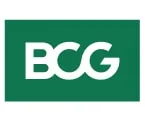
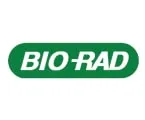
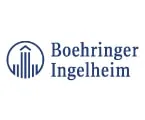

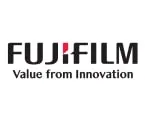
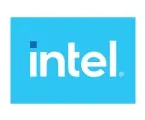
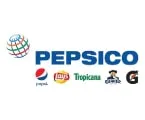
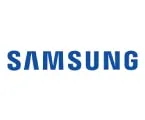
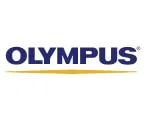
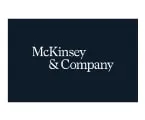
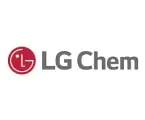

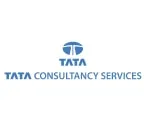
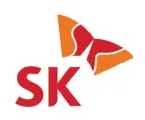
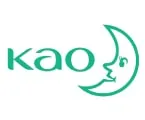
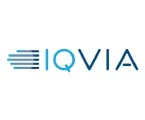
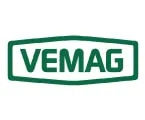
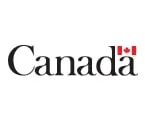

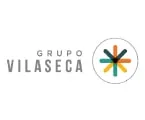
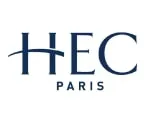

Published Date: Oct-2024
Published Date: Sep-2024
Published Date: Mar-2019
Please enter your corporate email id here to view sample report.
Subscribe to get the latest industry updates